Paris is peppered with nooks and crannies that seem like gorgeous secrets, that make you feel as though you’ve come across a place only the lucky ones know about. But Place Dauphine surely must be at the top of that list.
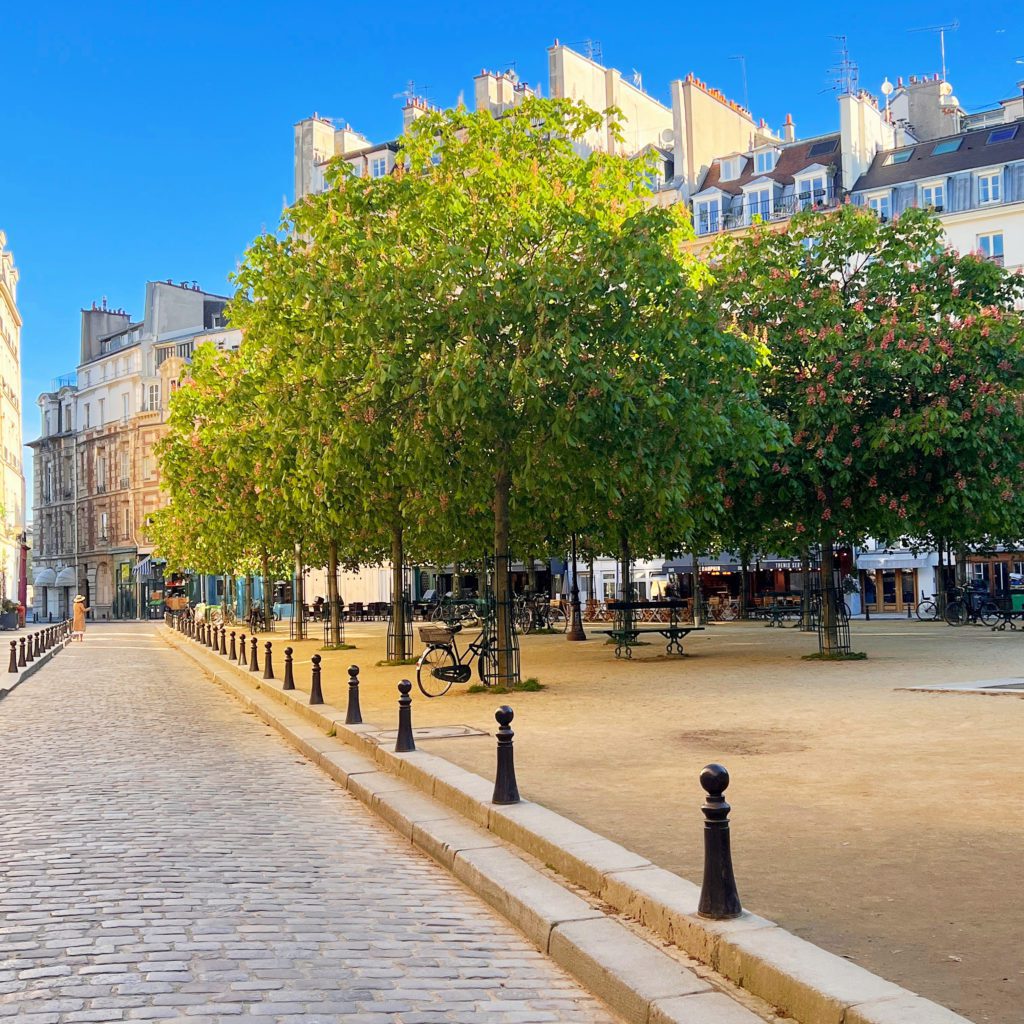
Perhaps it’s because so many people might easily walk right by. If you’re too taken, as you stride across Pont Neuf, by the stunning downstream vista of the Pont des Arts, the Louvre and the Eiffel Tower, you might well miss the main entry to Place Dauphine, which is directly opposite the equestrian statue of King Henri IV.
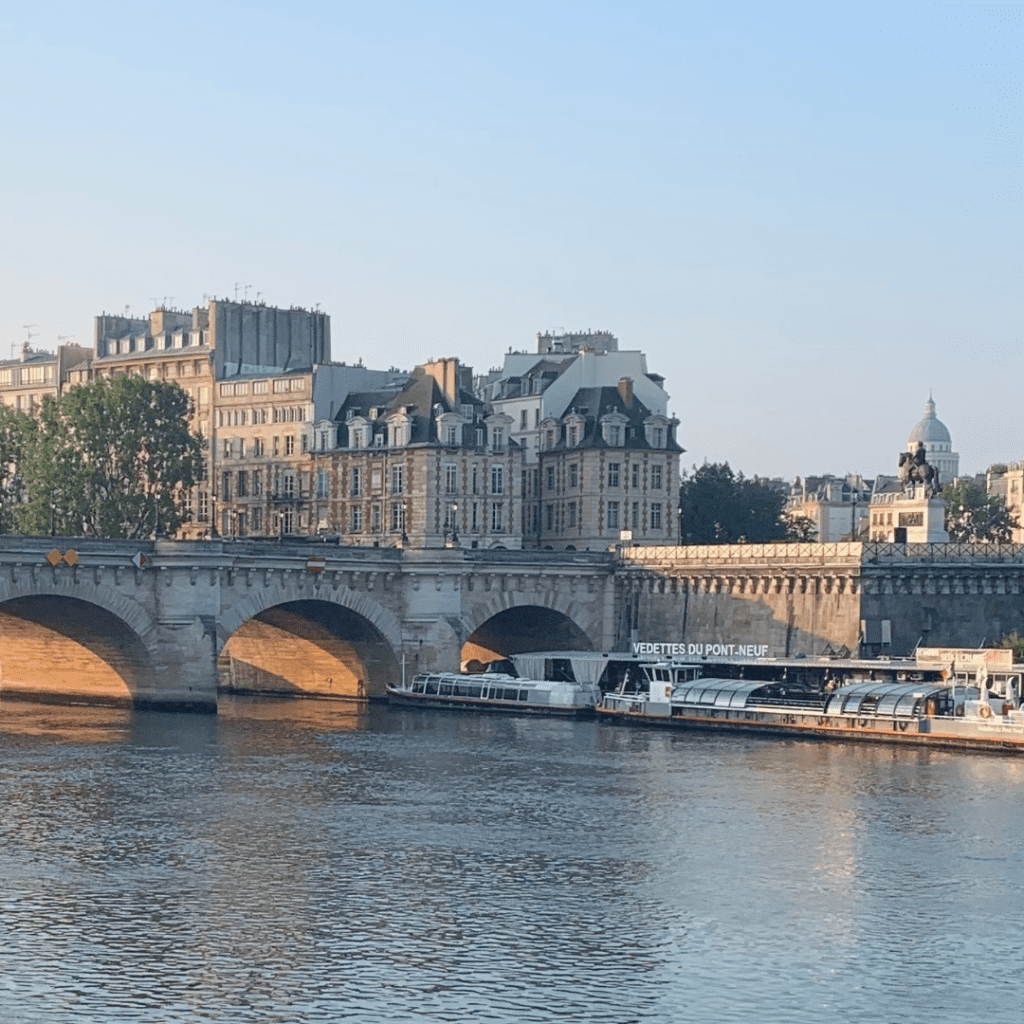
And that would be a shame, because this ‘square’ (it’s actually in the shape of an isosceles triangle) is a beguiling slice of Paris, a portal into an old Paris, but also a Paris that was coming into itself, emerging as a modern metropolis.

The land on which Place Dauphine sits was once the point of the Île de la Cité, explaining its triangular form. In medieval times, this was the site of the King’s Garden, a walled botanical oasis of trellised vines, beds of roses and lilies, herb patches, and an orchard of pear and fig trees. This is how it appeared in the 1550 Truchet et Hoyau map:
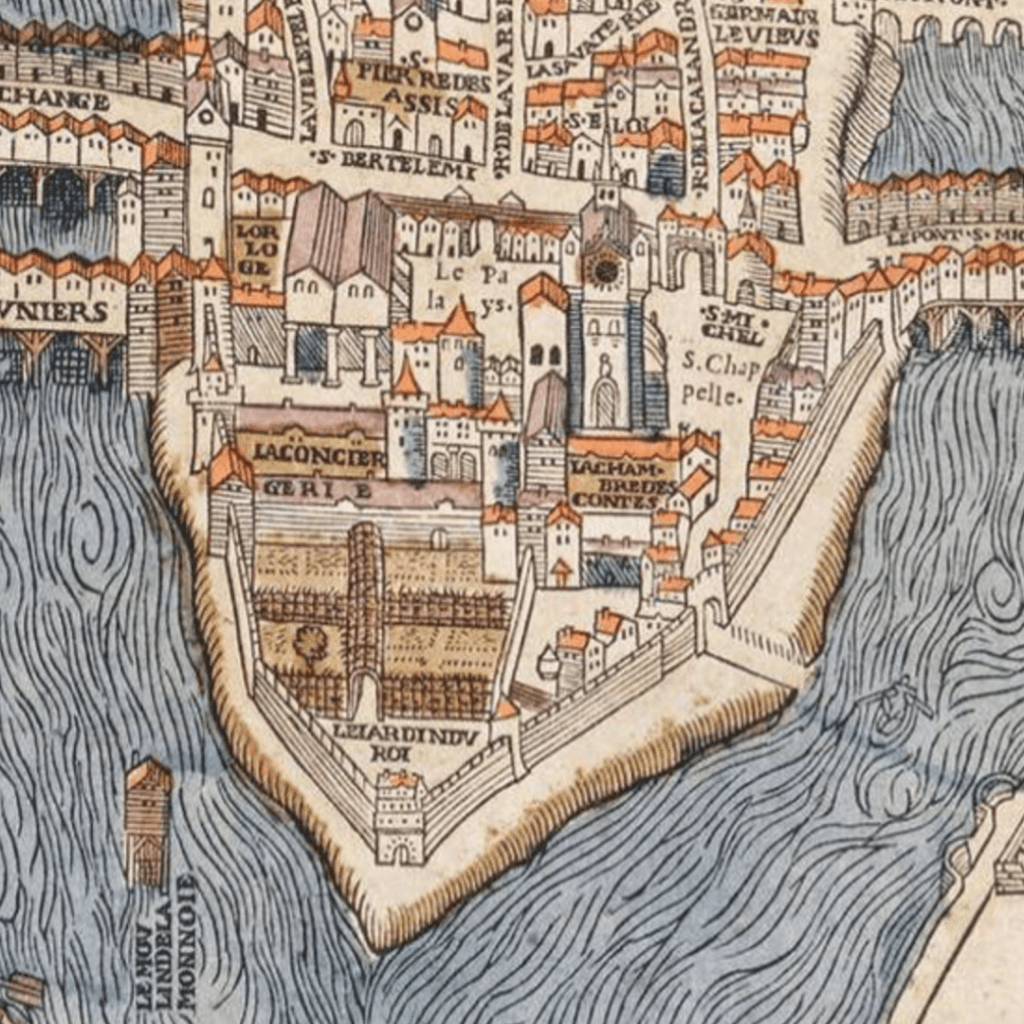
As Paris shook off its old medieval robes for a glamorous Renaissance makeover, the western tip of the Île de la Cité underwent a radical transformation, too. This snippet from the 1615 Mérian map shows the sleek new urban look of Place Dauphine:

Henri IV planned Place Dauphine — which was built between 1607-10, and named for the King’s son, the dauphin — as a kind of social extension of Pont Neuf, the first bridge to span from one bank to the other, connecting the city, as much as connecting its people to its very centre. Pont Neuf was a bridge for the people, with wide, raised footpaths so that Parisians could stroll along without worrying about the risk of muddy splashes. Just as the bridge linked both banks of Paris, it brought all classes together, too, on a social stage where Parisians could read the news on posters, buy flowers and roasted chestnuts, even have teeth extracted.
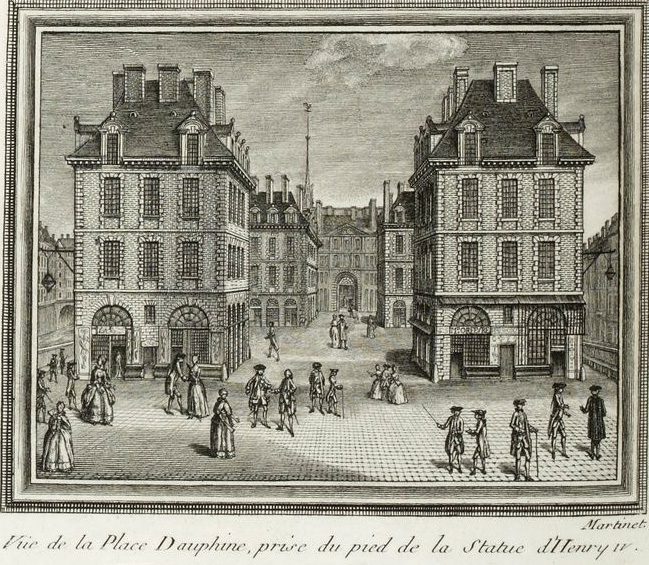
Vue de la Place Dauphine Prise du Pied de la Statue d’Henri IV by François-Nicolas Martinet, 1779
Place Dauphine was similarly designed to encourage congregation, in the same manner as Henri’s first piazza, the Place des Vosges. And like Place des Vosges, Place Dauphine was originally ringed in buildings of red brick, white stone and slate roof — an architectural craze called ‘aux trois crayons,’ which is a drawing technique, popular during the Renaissance, that uses red, white and black (think Peter Paul Rubens).

But unlike its sister piazza in the Marais, Place Dauphine has been much modified throughout its history — its old façades patched over, new stories and roofs added — giving it a more eclectic, almost haphazard appearance, that only enhances its whimsical atmosphere.
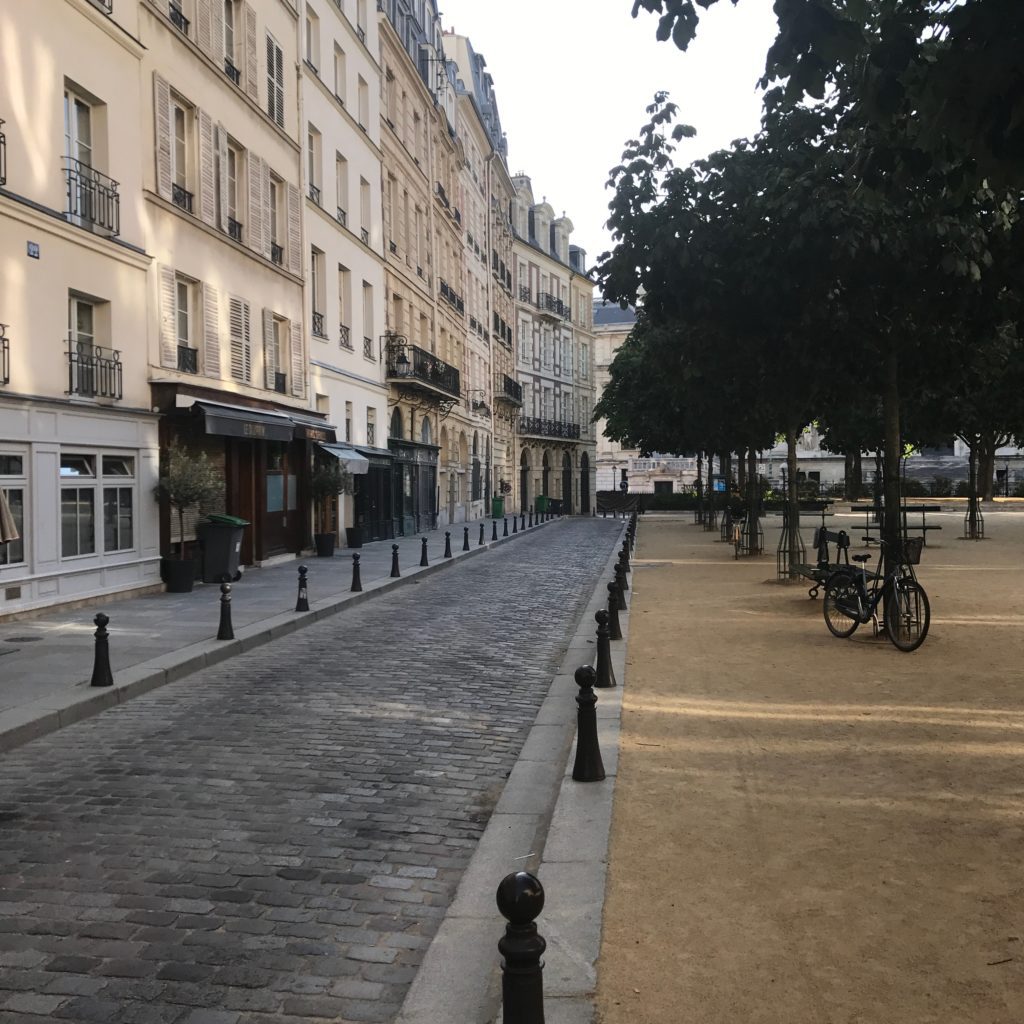
Place Dauphine was originally an enclosure of ritzy townhouses, with shops and workshops nestled into the ground and mezzanine floors. The mix of Parisians who lived and worked here — merchants and metalworkers, artists and artisans, lawyers and literary types — gave it a life of its own, almost a world within a world.
To give a sense of the upwardly-mobile, intellectually-inspiring kind of place this was: it was on Place Dauphine, in 1754, that an engraver and the daughter of a haberdasher gave birth to a baby girl who would grow up to become the French intellectual and revolutionary, Madame Roland.
With the ravages of the French Revolution, Place Dauphine’s glamour faded somewhat. Old photos show it in a rather tired state. Case in point: Charles Marville’s 1865 capture of Place Dauphine, when it featured the Desaix fountain (in honour of General Desaix who died at the battle of Marengo in 1800):

You can clearly see the rickety state of the buildings at Place Dauphine’s eastern end.
This dilapidation was one reason General Haussmann — from whom the old and the quaint were anathema — planned to raze Place Dauphine. The other was to create a monumental approach to his new Palais de Justice:
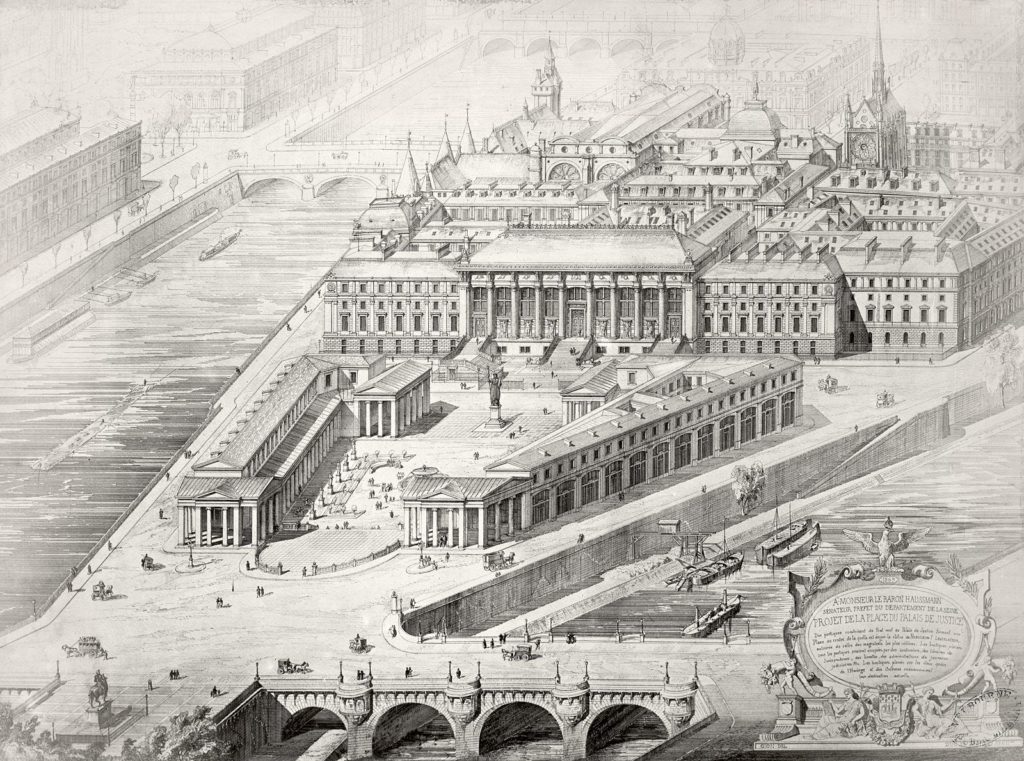
Fortunately for us (if not Haussmann), the Seine Prefect lost his job before he could see through his entire plan for the Île de la Cité. Fate, however, was partly on Haussmann’s side, because a chunk of this eastern flank of Place Dauphine was damaged during the 1871 Commune, necessitating its eventual demolition:

Still, Place Dauphine remains a world unto its own. This is perhaps in part thanks to the grove of trees within the middle of the square, which infuse the space with a rustic, almost fairy-tale charm. These trees had been planted by the time Eugène Atget photographed the square at the turn of the twentieth century:
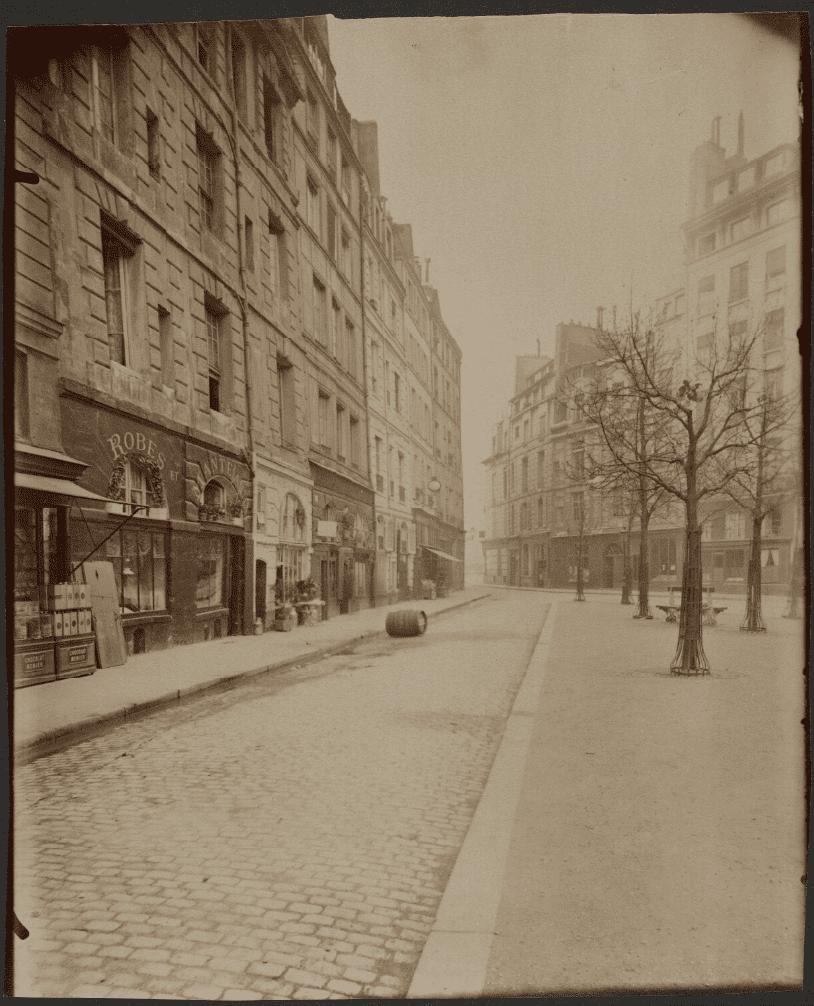
Atget, who loved to portray the melancholy and moodiness of Paris, suitably chose to shoot here in winter and it’s true that Place Dauphine has an extra romance to it in this season, when the chestnut trees’ leaves are stripped bare to reveal the square’s delightful architecture all the more. But little beats Place Dauphine when it’s in fragrant bloom, or when the sunlight filters through the leaves to the pétanque players below.
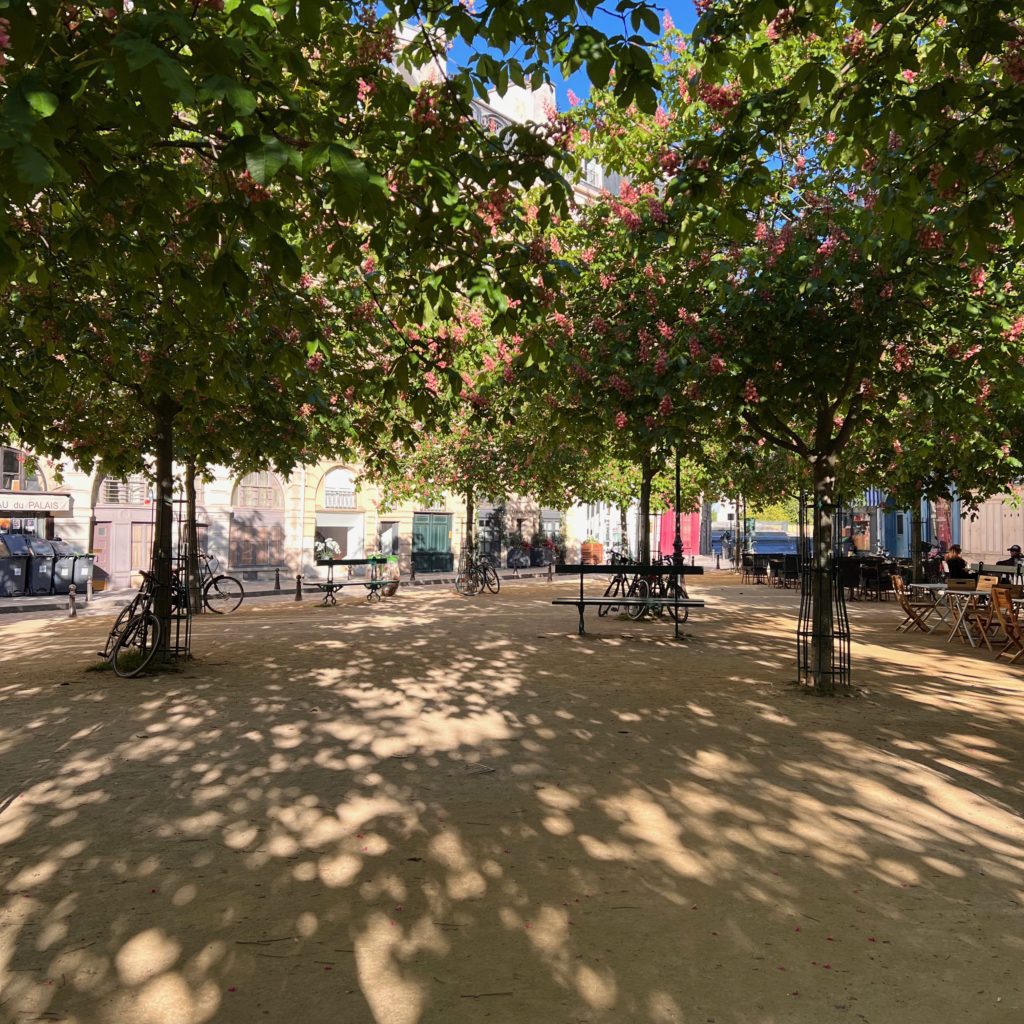
Most of Place Dauphine’s mature chestnuts succumbed to disease in 2009, and had to be replaced, but their successors are coming along nicely, their dainty appearance and pink flowers adding yet another pretty touch to this sweet spot.
In spring and summer, the square’s restaurants extend their terraces so that you can dine al fresco under the chestnuts.
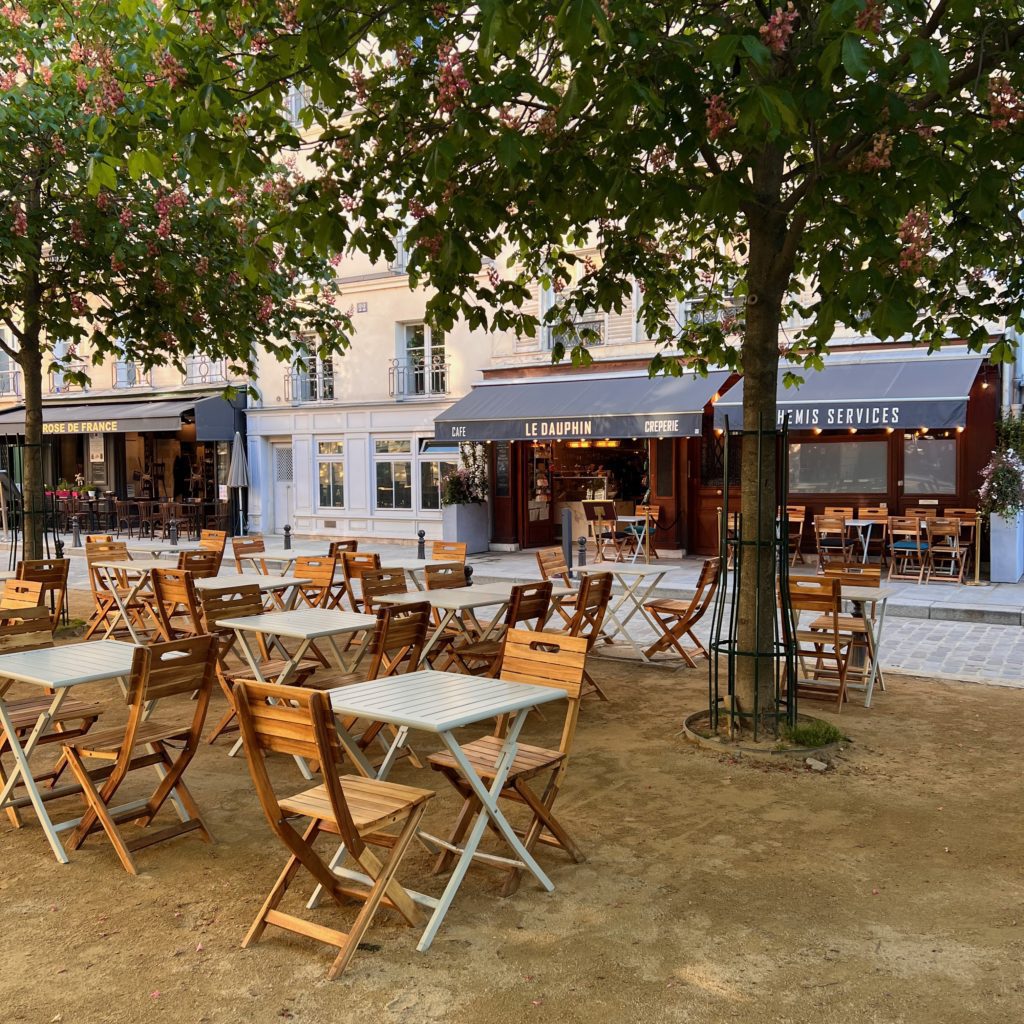
But it’s equally enjoyable to rug up here in winter, for a hearty dinner. Ideally at the historic Restaurant Paul, which so inspired Surrealist and poet André Breton.

Place Dauphine has also inspired screen writers. If you get the feeling, when here, that you’re on a stage set, the reason could well be because Place Dauphine has appeared in numerous movies and television shows …
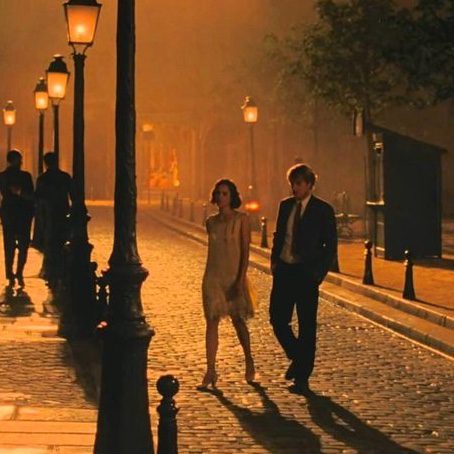


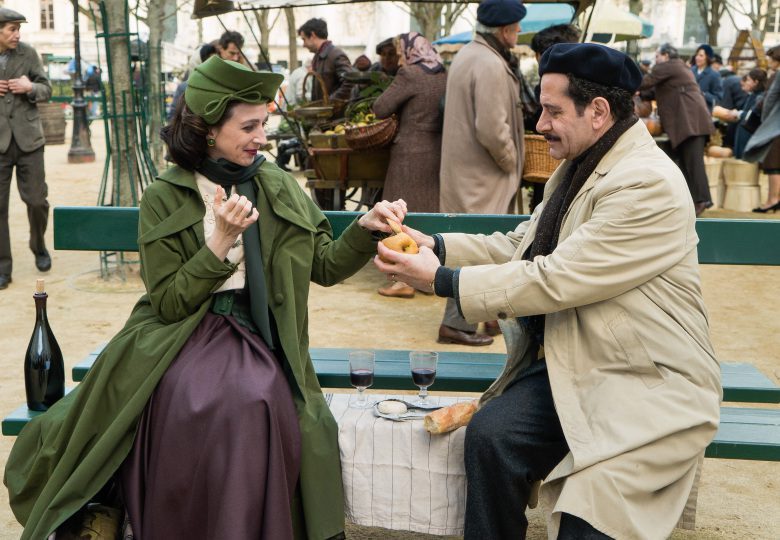
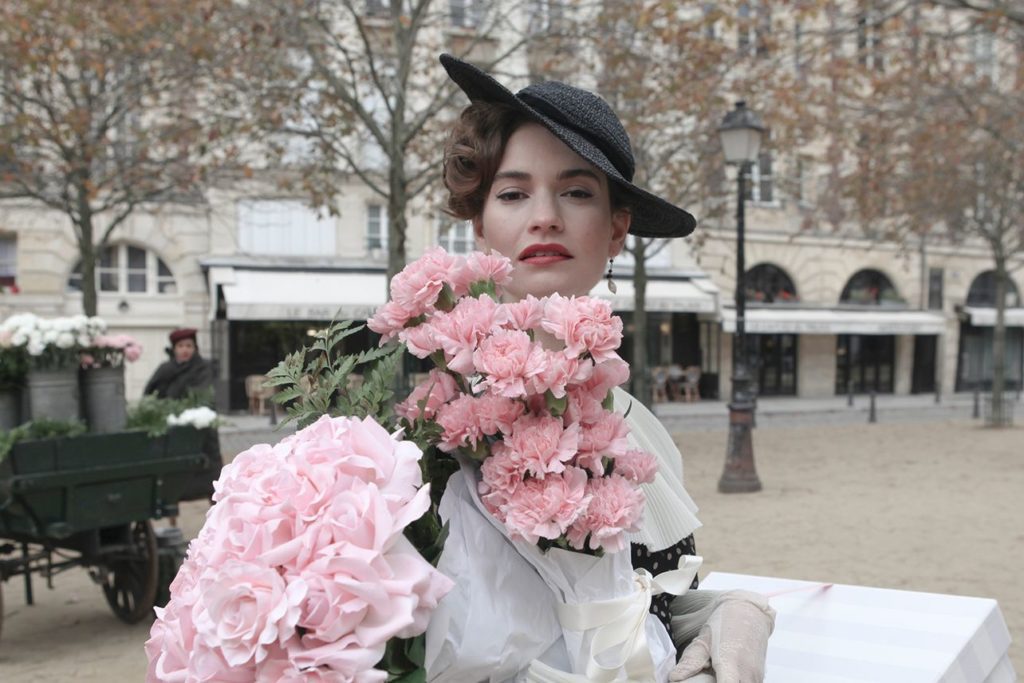
Place Dauphine was once home to legendary French actress Simone Signoret and actor-singer Yves Montand, and you can’t help but peer around at the various façades, wondering what other fabulous lives have been led, or are being led, in the beautiful apartments that must be tucked away here.

If loitering en terrasse in the hope of meeting a friendly local doesn’t score you a behind-the-scenes invite, you could always rent an apartment yourself: Paris Perfect offers an entire building of accommodation options. It’s a lovely way to live the dream … even if only for a night.

